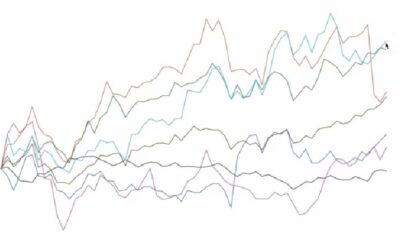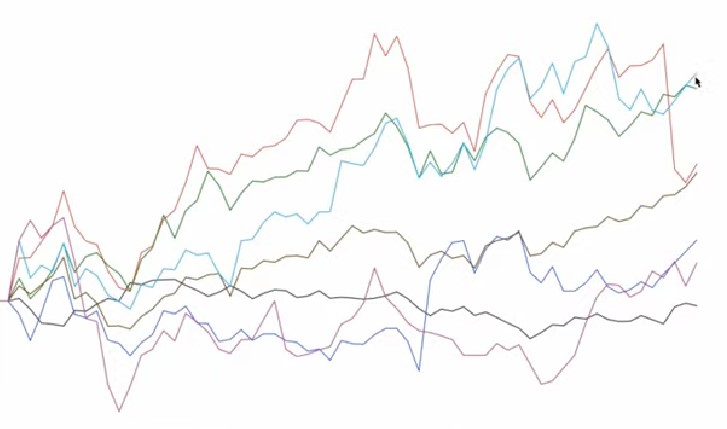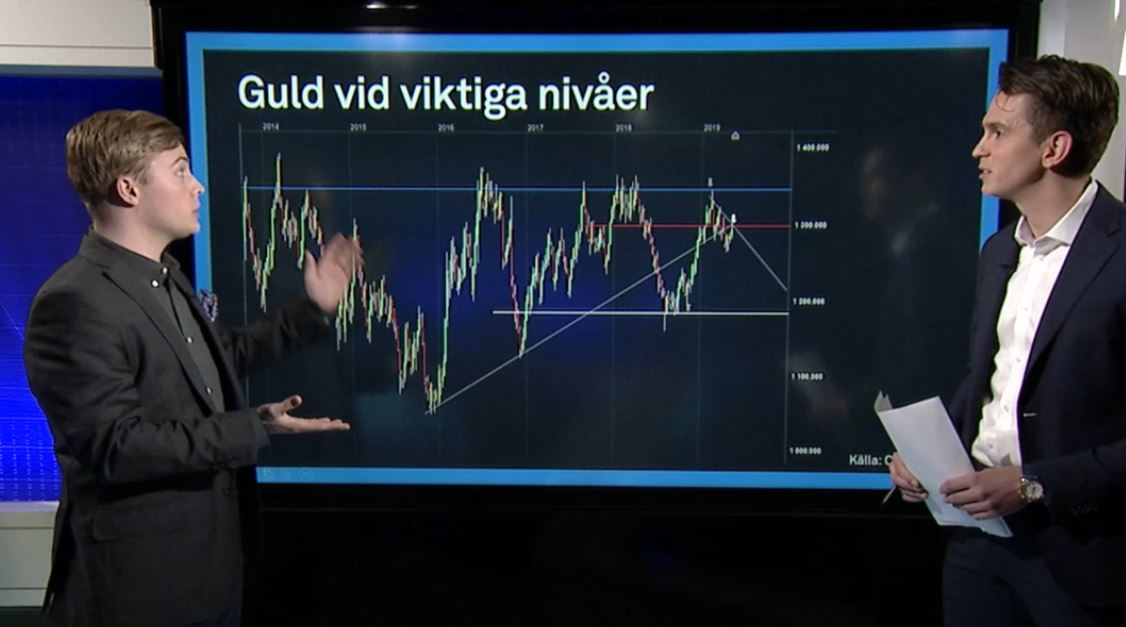Analys från DailyFX
Dollar Technical Analysis: Bear or Bull Trap?
Talking Points:
-Dollar Technical Strategy: overheated hawks and lack of Trump details keeps USD on heels
-Previous Post: Dollar Technical Analysis: Next Dollar Breakdown Could Travel
-If you’re looking for trading ideas, check out our Trading Guides
-GDP and durable goods are the upcoming data highlights
The US Dollar as illustrated by the Dollar Index or DXY has come back to a key polarity point similar to what we earlier pointed out in Crude Oil. There is a lot of confusion about the political landscape as Donald Trump has come into the US Presidential Office signing multiple executive orders. Many of the orders have expectedly been met with resistance from Congress with the notable Tweet from John McCain, the 2008 Republican Nominee providing a sample who said, ”@POTUS can sign whatever executive orders he likes, but the law is the law,” This was said in response to an interrogation order.
While announcements will continue to come, it’s difficult to see with clarity what will come through and what will be voted down. Either way, you look fundamental landscape of trade and capital flows as well as Trump’s potential inflation-inducing policies that could keep the Fed’s finger on the proverbial trigger, there is a great deal of uncertainty. Markets are always uncertain as Risk is properly defined as an uncertain outcome. However, what’s unique is the confidence of higher inflation that took the USD higher that was seen in Treasury yields that we closed out trading in 2016.
An unraveling of the confidence can similarly shake the USD Bulls. While the US has a definitive monetary policy edge, and everyone loves to discuss the strong USD, which could still continue to strengthen, it’s worthy to note as shown in the chart below, that as of January 25, the DXY is trading at similar levels to March 2015.
Naturally, there has been a lot of volatility since March 2015, but it’s fair to say that there are forces that appear to be limiting USD strength. Last year, there was the talk of a Shanghai Accord that was a supposed Plaza Accord 2.0 that was designed to keep a cap on the USD. Now, let’s look at the charts to understand the momentum and support that is at the core of the DXY analysis.
Technical Picture: If (big if) we begin to see a break below the Ichimoku Cloud and the Andrew’s Pitchfork exterior parallel on a weekly close basis, it would be very difficult to carry the torch for the DXY-bull camp. The next level to watch would be a weekly close below the 99-level where a breakdown from here could bring a washout of current long positions.
A breakdown below the 99-level would take us below the 50% retracement of the August-January range. The price level, 98.95 was also the closing high in October, and a breakdown below this level may open the door for a test of the 61.8% retracement of the August-January range at 97.80, which would be triggeredby a strong move higher in EUR, GBP, or JPY.
If we get the breakdown, the closing quarter of 2016 could go down as a major bull trap, and a weaker USD could fundamentally change the way many asset managers are positioned in early-2017. However, if DXY can hold above the ~99-level, and we eventually break back above 101/103 zone, the recent pull-back to start 2017 may go down as a bear trap that would inflict pain on those with short-USD exposure (including trillions of off-shore borrowed USD.) Either way, there is uncertainty ahead, and it appears the sideways price action is coming to an end.
We could be looking at a favorable period of keeping your powder dry and being able to jump on the trend that comes through the fire, whether it be bullish or bearish.
Interested in Joining Our Analysts, Instructors, or Strategists For a Free Webinar? Register Here
D1 DXY Sitting Near Prior Resistance, A Breakdown Likely Changes The Landscape
Chart created by Tyler Yell, CMT
—
Shorter-Term DXY Technical Levels for Wednesday, January 25, 2017
For those interested in shorter-term levels of focus than the ones above, these levels signal important potential pivot levels over the next 48-hours of trading.

T.Y.
Analys från DailyFX
EURUSD Weekly Technical Analysis: New Month, More Weakness
What’s inside:
- EURUSD broke the ‘neckline’ of a bearish ‘head-and-shoulders’ pattern, April trend-line
- Resistance in vicinity of 11825/80 likely to keep a lid on further strength
- Targeting the low to mid-11600s with more selling
Confidence is essential to successful trading, see this new guide – ’Building Confidence in Trading’.
Coming into last week we pointed out the likelihood of finally seeing a resolution of the range EURUSD had been stuck in for the past few weeks, and one of the outcomes we made note of as a possibility was for the triggering of a ’head-and-shoulders’ pattern. Indeed, we saw a break of the ’neckline’ along with a drop below the April trend-line. This led to decent selling before a minor bounce took shape during the latter part of last week.
Looking ahead to next week the euro is set up for further losses as the path of least resistance has turned lower. Looking to a capper on any further strength there is resistance in the 11825-11880 area (old support becomes new resistance). As long as the euro stays below this area a downward bias will remain firmly intact.
Looking lower towards support eyes will be on the August low at 11662 and the 2016 high of 11616, of which the latter just happens to align almost precisely with the measured move target of the ‘head-and-shoulders’ pattern (determined by subtracting the height of the pattern from the neckline).
Bottom line: Shorts look set to have the upperhand as a fresh month gets underway as long as the euro remains capped by resistance. On weakness, we’ll be watching how the euro responds to a drop into support levels.
For a longer-term outlook on EURUSD, check out the just released Q4 Forecast.
EURUSD: Daily
—Written by Paul Robinson, Market Analyst
You can receive Paul’s analysis directly via email bysigning up here.
You can follow Paul on Twitter at@PaulRobinonFX.
Analys från DailyFX
Euro Bias Mixed Heading into October, Q4’17

Why and how do we use IG Client Sentiment in trading? See our guide and real-time data.
EURUSD: Retail trader data shows 37.3% of traders are net-long with the ratio of traders short to long at 1.68 to 1. In fact, traders have remained net-short since Apr 18 when EURUSD traded near 1.07831; price has moved 9.6% higher since then. The number of traders net-long is 15.4% lower than yesterday and 16.4% higher from last week, while the number of traders net-short is 0.4% higher than yesterday and 10.5% lower from last week.
We typically take a contrarian view to crowd sentiment, and the fact traders are net-short suggests EURUSD prices may continue to rise. Positioning is more net-short than yesterday but less net-short from last week. The combination of current sentiment and recent changes gives us a further mixed EURUSD trading bias.
— Written by Christopher Vecchio, CFA, Senior Currency Strategist
To contact Christopher Vecchio, e-mail cvecchio@dailyfx.com
Follow him on Twitter at @CVecchioFX
To be added to Christopher’s e-mail distribution list, please fill out this form
Analys från DailyFX
British Pound Reversal Potential Persists Heading into New Quarter

Why and how do we use IG Client Sentiment in trading? See our guide and real-time data.
GBPUSD: Retail trader data shows 38.2% of traders are net-long with the ratio of traders short to long at 1.62 to 1. In fact, traders have remained net-short since Sep 05 when GBPUSD traded near 1.29615; price has moved 3.4% higher since then. The number of traders net-long is 0.1% higher than yesterday and 13.4% higher from last week, while the number of traders net-short is 10.6% lower than yesterday and 18.3% lower from last week.
We typically take a contrarian view to crowd sentiment, and the fact traders are net-short suggests GBPUSD prices may continue to rise. Yet traders are less net-short than yesterday and compared with last week. Recent changes in sentiment warn that the current GBPUSD price trend may soon reverse lower despite the fact traders remain net-short.
— Written by Christopher Vecchio, CFA, Senior Currency Strategist
To contact Christopher Vecchio, e-mail cvecchio@dailyfx.com
Follow him on Twitter at @CVecchioFX
To be added to Christopher’s e-mail distribution list, please fill out this form
-
Analys från DailyFX10 år ago
EUR/USD Flirts with Monthly Close Under 30 Year Trendline
-
Marknadsnyheter5 år ago
BrainCool AB (publ): erhåller bidrag (grant) om 0,9 MSEK från Vinnova för bolagets projekt inom behandling av covid-19 patienter med hög feber
-

 Marknadsnyheter2 år ago
Marknadsnyheter2 år agoUpptäck de bästa verktygen för att analysera Bitcoin!
-
Analys från DailyFX12 år ago
Japanese Yen Breakout or Fakeout? ZAR/JPY May Provide the Answer
-

 Marknadsnyheter2 år ago
Marknadsnyheter2 år agoDärför föredrar svenska spelare att spela via mobiltelefonen
-
Analys från DailyFX12 år ago
Price & Time: Key Levels to Watch in the Aftermath of NFP
-
Analys från DailyFX8 år ago
Gold Prices Falter at Resistance: Is the Bullish Run Finished?
-

 Nyheter7 år ago
Nyheter7 år agoTeknisk analys med Martin Hallström och Nils Brobacke











